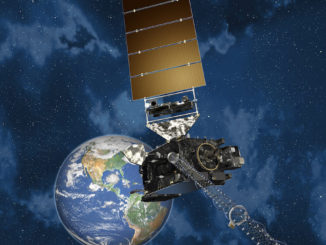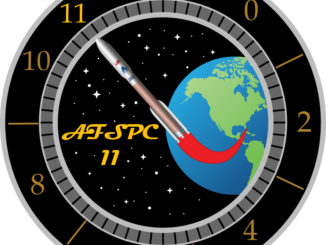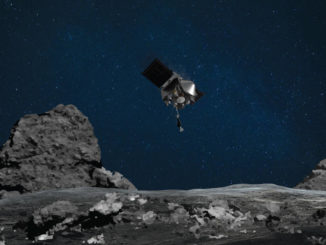
CAPE CANAVERAL — Continuing a run of military satellite deployments this summer, United Launch Alliance has begun stacking the Atlas 5 rocket that will boost the Navy’s next mobile communications craft.
The 15,000-pound Mobile User Objective System satellite No. 4 is scheduled for launch atop the most-powerful version of the Atlas-Centaur rocket on Aug. 31 from Cape Canaveral.
Liftoff will occur some time during an unclassified, four-hour period of 4:07 to 8:07 a.m. EDT. The actual target launch time within that period will be announced closer to the liftoff date.
The mission follows successful launches of the Global Positioning System 2F-10 navigation satellite on July 15 by another Atlas 5 and the Air Force’s Wideband Global SATCOM satellite No. 7 by a Delta 4 rocket on July 23.
This will be the second Atlas launch for the Navy this year, following MUOS No. 3 on Jan. 20 to cover the Atlantic Ocean region. MUOS 1 was launched Feb. 24, 2012 aboard an Atlas 5 and serves as the Pacific Ocean satellite. MUOS 2 launched July 19, 2013 aboard another Atlas 5 and serves as the continental U.S. satellite.
MUOS 4 will enter service over the Indian Ocean, creating a worldwide reach for the constellation.
The Navy is fielding a constellation of four primary satellites and one in-space spare to cover the entire planet for its new rugged smart-phone communications network.
The final MUOS launch is scheduled for July 2016 on Atlas.
“MUOS allows troops all over the world to talk, text and share mission data seamlessly, while traveling, like a cellular network, without having to worry about where they are in relation to a satellite,” said Iris Bombelyn, Lockheed Martin’s vice president for narrowband communications.
“MUOS 4 will complete our near global coverage, reaching further north and south toward the poles than ever before.”
This year has seen four Atlas 5 rockets fly so far, launching the MUOS 3 communications satellite in January, NASA’s MMS magnetospheric science experiment in March, the Air Force’s X-37B spaceplane in May and sustaining the GPS constellation with launch of a replacement satellite in July.
The rocket has five more missions on the manifest for 2015, including launches of MUOS 4, a classified NRO payload from Vandenberg, Mexico’s Morelos 3 communications satellite, the GPS 2F-11 navigation spacecraft and Orbital ATK’s Cygnus cargo-delivery craft for the International Space Station.

The stacking work for AV-056 began this morning as the bronze-colored, 106.6-foot-long, 12.5-foot-diameter first stage was pulled to the VIF doorway, erected upright and hoisted inside the building to be put aboard the mobile launcher platform.
Known as the Common Core Booster, the stage produces 860,000 pounds of thrust to lift the rocket off the ground. It burns kerosene fuel and supercold liquid oxygen during the initial minutes of flight.
In the coming days, five strap-on boosters will be added, along with the barrel-like interstage adapter, the Centaur upper stage and the base sections of the nose cone. Centaur is 41.5 feet in length, 10 feet in diameter and is fueled by liquid hydrogen and liquid oxygen.
The payload is undergoing its own processing in nearby Titusville at the Astrotech facility. It will be delivered to the VIF and mated to the Atlas-Centaur in mid-August.
The 206-foot-tall rocket will be flying in the top-of-the-line, 551-variant that features an RD-180 main engine powering the first stage, five strap-on solid-fuel boosters and an RL10 on the Centaur upper stage. The satellite will be enclosed in an 18-foot-diameter composite nose cone for atmospheric ascent.
The MUOS 4 is destined for geosynchronous orbit 22,300 miles high.
The launch will be the 56th Atlas 5 rocket since 2002 and the 22nd overseen by the Air Force since 2007. For United Launch Alliance, it is the company’s 99th launch overall since 2006 and the eighth this year.
See earlier MUOS 4 coverage.
Our Atlas archive.



